The Hindu Newspaper Analysis for UPSC
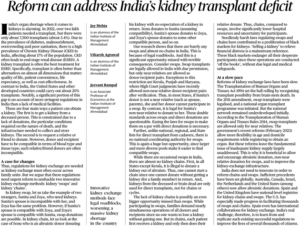
The Hindu Newspaper Analysis 28 September 2023
- India’s organ shortage when it comes to kidneys is alarming. In 2022, over two lakh patients needed a transplant, but there were only about 7,500 transplants (about 3.4%).
- Due to the prevalence of diabetes, malnourishment, overcrowding and poor sanitation, there is a high prevalence of Chronic Kidney Disease (CKD) in India, affecting about 17% of the population.
- The Transplantation of Human Organs and Tissues Act 1994 set the ball rolling by recognising transplant possibility from brain-stem death. In the 2011 amendment, swap transplants were legalised, and a national organ transplant programme was initiated.
- About National Organ and Tissue Transplant Organization (NOTTO):
- It is a national level organisation set up under the Directorate General of Health Services, Ministry of Health and Family Welfare.
- It functions as the apex centre for all India activities of coordination and networking for procurement and distribution of organs and tissues and registry of organs and tissues donation and transplantation in the country.

- A good part of the world’s population is growing older, and India mirrors this trend as well.
- The reality, according to the United Nations Population Fund’s India Ageing Report 2023, is that the population above 60 years will double from 10.5% or 14.9 crore (as on July 1, 2022) to 20.8% or 34.7 crore by 2050.
- With one in five individuals set to be a senior citizen, there will be implications for health, economy, and society.
- For instance, women elderly citizens outnumber their male counterparts. At 60 years, a person in India may expect to live another 18.3 years, which is higher in the case of women at 19 years compared to men at 17.5 years. If women in India, where labour force participation is low at 24%, do not have economic and social security, they will become more vulnerable in old age.
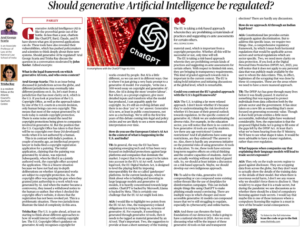
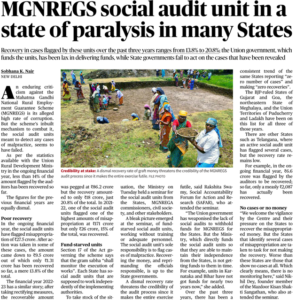
- An enduring criticism against the Mahatma Gandhi National Rural Employment Guarantee Scheme (MGNREGS) is its alleged high rate of corruption. But the scheme’s inbuilt mechanism to combat it, the social audit units meant to detect any cases of malpractice, seems to have failed.
- As per the statistics available with the Union Rural Development Ministry in the ongoing financial year, less than 14% of the amount flagged by the auditors has been recovered so far.
- Section 17 of the Act governing the scheme says that the gram sabha “shall monitor the execution of works”. Each State has social audit units that are supposed to work independently of the implementing authorities.
- MGNREGA is the abbreviation for the Mahatma Gandhi National Rural Employment Guarantee Act 2005.
- It is a law passed by the Indian government in 2005 that guarantees the “right to work” to rural citizens of India.
- Under this, the government assures a minimum of 100 days of unskilled manual work to an adult member of an eligible rural household.
- The main objective of the MGNREGA is to provide employment to rural citizens and improve their economic conditions.
- Eligibility Criteria: For receiving the benefits of the MGNREGA Scheme, the following eligibility criteria are to be met by the applicant:
- Citizen of India
- 18 years of age at the time of application
- Rural Household
- Willing to do unskilled work
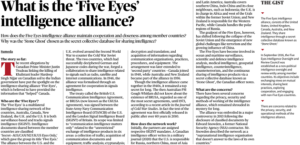
- The ‘Five Eyes’ is a multilateral intelligence-sharing network of five countries, Australia, Canada, New Zealand, the U.K. and the U.S. It is both surveillance-based and tracks signals intelligence (SIGINT). Intelligence documents shared between the member countries are classified ‘Secret—AUS/CAN/NZ/UK/US Eyes Only,’ which gave the group its title ‘Five Eyes.’
- The alliance between the U.S. and the U.K. evolved around the Second World War to counter the Cold War Soviet threat. The two countries, which had successfully deciphered German and Japanese codes during the war, forged a collaboration to share intelligence related to signals such as radio, satellite and internet communications.
- In 1946, the alliance was formalised through an agreement for cooperation in signals intelligence.
- The treaty called the British-U.S. Communication Intelligence Agreement, or BRUSA (now known as the UKUSA Agreement), was signed between the State-Army-Navy Communication Intelligence Board (STANCIB) of the U.S. and the London Signal Intelligence Board (SIGINT) of Britain.
- The arrangement was later extended to ‘second party’ countries —Canada joined in 1948, while Australia and New Zealand became part of the alliance in 1956.

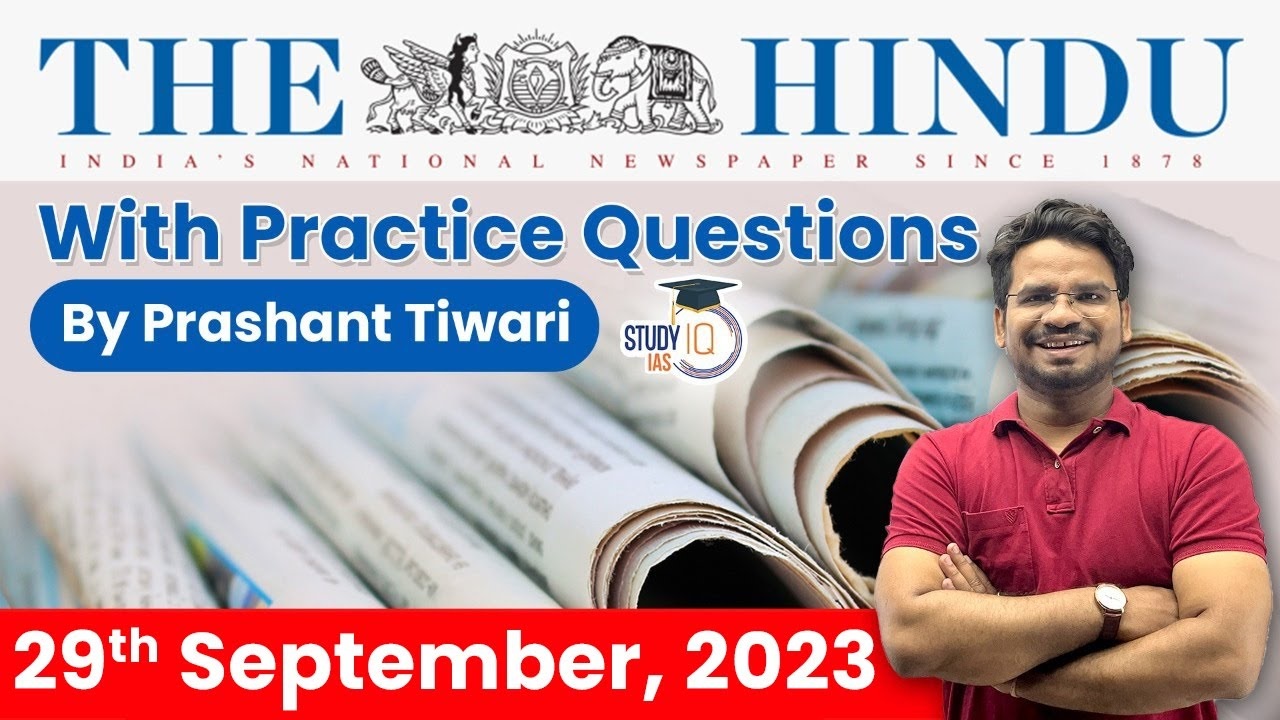
 The Hindu Newspaper Analysis 6 October 2...
The Hindu Newspaper Analysis 6 October 2...
 The Hindu Newspaper Analysis 5 October 2...
The Hindu Newspaper Analysis 5 October 2...
 The Hindu Newspaper Analysis 4 October 2...
The Hindu Newspaper Analysis 4 October 2...





















